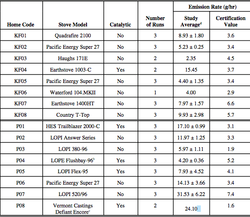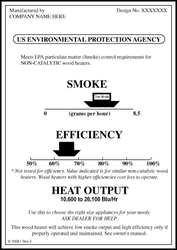Gooserider said:
I agree, shopping "by the numbers" isn't real useful, which is why you might have noticed I do NOT consider EPA numbers in anything I've ever suggested, and don't plan to. At best they might be a far secondary consideration if choosing between two otherwise equally good stoves, which is seldom the case.
However looking at the study, I saw lots of stuff on the Encore in particular that made me suspicious.
This is starting to sound like a Clinton vs. Bush debate!
"I was suspicious when I found out that President Bush's brother was in charge of security at the WTC".......
"Was that Encore red? I heard they put out less heat".
"What was the IQ of the person firing that Encore?"
"Who has more ties to Al-Queda and the war machine - PE or VC?"
"Since they are both Canadian, did the fact that they have mandated health care affect the results?"
:coolgrin:
Bottom line - look at that tag, look at those studies - look at what the EPA and the scientists say. 100% of known data points to the fact that GPH should not be considered in a buying decision. If a customer wants to do so, that is their choice.....but IHMO it is foolish to go against all the studies and recommendations.
It appears that most EPA stoves operate at somewhere between 4 and 15 GPH in the field, depending on everything from the user to the weather to the age of the product. We could start a separate thread about how this might be improved. It is my guess that the wide variances are due to BOTH design and the other factors (operator, wood, climate, etc.).
But, as I have said many times, the best stoves would be more forgiving of these things. A dealer will often qualify a customer for some of them --- like "How are you going to use this stove?" or "Your chimney sounds sluggish, a hot burning non-cat might work best"....etc, etc, etc.
We've had people on this forum who removed their catalytic converters! So why should we assume people will replace them as they age? Typical consumer behavior says they will not (as a whole), especially if such replacement involves a high cost or a professional.
My guess is that 90% plus of current stoves are non-cat for this and other reasons. As other threads have covered, cats are great for certain things - long and low burns being foremost among them. But the excess costs and complexity (yes, even having to close a bypass is just one more step for the consumer) are making most casual wood burners steer toward non-cats. OTOH, stoves like the Woodstock and Blaze King and Encore are the favorites of those who do their research and need those qualities (long burn, etc.)



